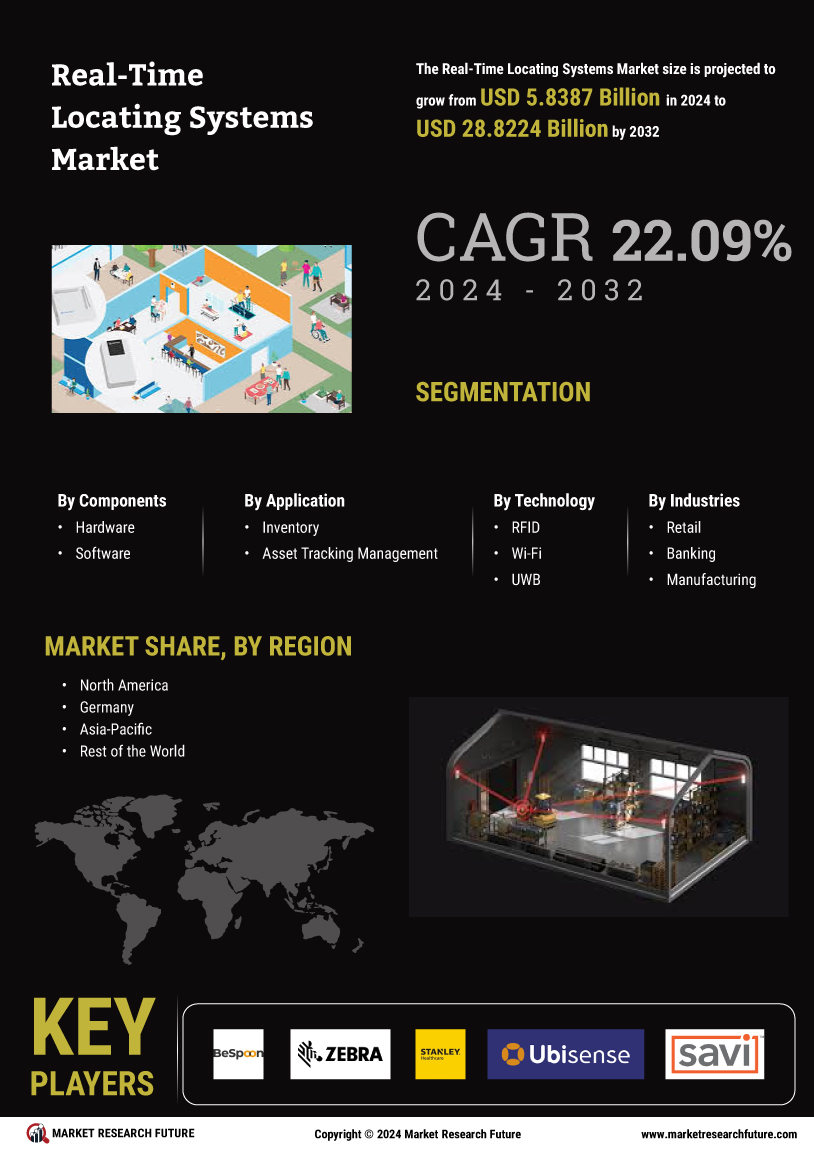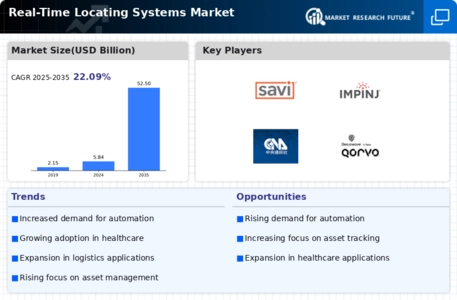Real Time Locating Systems Market Summary
As per Market Research Future Analysis, the Real-Time Locating Systems (RTLS) Market is poised for significant growth, expanding from USD 5.8387 Billion in 2024 to USD 28.8224 Billion by 2032, with a robust CAGR of 22.09% during the forecast period. The market was valued at USD 4.6479 Billion in 2023, driven by the increasing demand for efficient resource utilization and the growing awareness of location systems. Key applications include inventory management and asset tracking, particularly in healthcare and manufacturing sectors. The hardware segment leads the market, accounting for approximately 40% of the total share in 2022, while software is expected to grow the fastest. The North American region dominates the market, supported by a strong industrial sector and the rise of SMEs.
Key Market Trends & Highlights
Key trends driving the RTLS market include high ROI, technological advancements, and increased adoption across industries.
- RTLS market projected to grow from USD 5.8387 Billion in 2024 to USD 28.8224 Billion by 2032.
- Hardware segment accounted for ~40% of the total RTLS market in 2022.
- Healthcare holds the largest market share due to mass adoption of RTLS-based systems.
- RFID technology dominated the market in 2022 and is expected to maintain its lead.
Market Size & Forecast
| 2024 Market Size | USD 5.8387 Billion |
| 2032 Market Size | USD 28.8224 Billion |
| CAGR | 22.09% |
Major Players
Key players include Stanley Healthcare, Zebra Technologies, Ubisense Group PLC, Savi Technology, IMPINJ Inc., AiRISTA LLC, and CenTrak Inc.





